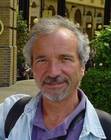Victor E. Smith's Blog
March 10, 2025
Test Post Novel in Progress
August 1, 2023
Neil Gaiman’s The Ocean at the End of the Lane
July 11, 2023
Hello world!
Welcome to WordPress. This is your first post. Edit or delete it, then start writing!
September 6, 2021
Review Dr. Bruce Greyson AFTER
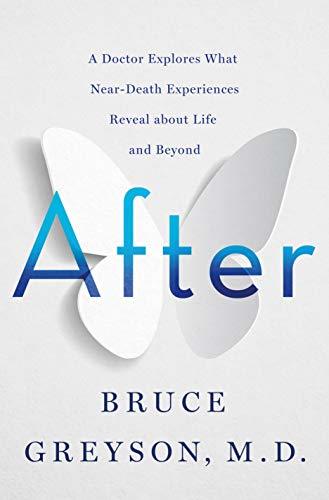
Credit the progression of the Near-Death Experience (NDE) over the past 50 years from an event that raised eyebrows about the experiencer’s sanity to a phenomenon that merited serious consideration by scientific and medical professionals to the curiosity and persistence of Dr. Bruce Grayson, Professor Emeritus of Psychiatry and Neurobehavioral Sciences at the University of Virginia, among many other professional credentials.
Dr. Greyson’s interest in near-death experiences began in medical school when he encountered a patient in the emergency room who stunned him with an account of leaving her body while unconscious, an event that challenged his orthodox beliefs about the mind and the brain and thus led him on a lifelong journey to study near-death experiences scientifically. He went on to co-find the International Association for Near-Death Studies (IANDS) and serve as editor to the Journal of Near-Death Studies for 27 years.
As a writer myself who focuses on reincarnation and the paranormal, I found IANDS ten years ago, have attended several of its events, read widely on the subject, and observed related research by Dr. Gary Schwartz of the University of Arizona. This is not to blow my horn, but to give some standing in reviewing and recommending Dr. Greyson’s recently published (March 2021) memoir/autobiography of his work with NDE’s, After: A Doctor Explores What Near-Death Experiences Reveal About Life and Beyond. To those with considerable experience, direct or indirect, in the subject, Dr. Greyson’s work might, as a top Amazon reviewer put it, appear to be “interesting, not groundbreaking,” qualifying such bluntness by saying: “You will not be disappointed if you approach this book as a biography of Greyson and a late-in-life summation of his work and perspective on the NDE phenomenon. It isn’t by any means technical or groundbreaking. It touches all the bases, but not in a deep or challenging way.” A left-handed compliment but the type of innuendo that Dr. Greyson as an academic working in a non-traditional field must be used to, and one I see as more of a positive than perhaps intended. After is indeed not highly technical or overburdened with jargon; Greyson is an experienced teacher introducing his subject in a way that novices to the concept of the NDE, his target audience, can readily absorb. That same reviewer also takes issue with the author holding to middle ground: “Greyson bends over backwards – and beyond – to maintain at least a façade of objectivity between the extremes of insisting NDEs are full-blown experiences of the afterlife and insisting they’re products of natural processes.” Again, a left-handed swipe that can be seen as a compliment to Dr. Greyson’s ability to encourage the reader to think independently and synthesize the opposite sides of the argument for himself. He does this so elegantly when he writes: “One of the fruits of that open-minded attitude is an appreciation for things we can’t explain. Studying things that fit our preconceived ideas helps us understand their fine points better. But studying things that don’t fit our preconceived ideas is what often drives breakthroughs in science.”
And I believe he is plenty bold enough in stating what is obvious and incontrovertible about the NDE experience: “Whatever NDEs were, they were changing people’s lives as surely as our psychiatric drugs and psychotherapy. What’s more, they seemed to do this much faster, more profoundly, and more permanently. And beyond that, NDEs changed not only the experiencers’ lives, but often the lives of others who came into contact with them—including me.”
He takes on the tough, perhaps unfathomable, questions, a key one of which in his own words is: “What’s a better way to think about the relationship between the chemical and electrical activity in your brain and the thoughts and feelings in your mind?” He then points out the need to differentiate the mind from the brain, citing NDE phenomenon as evidence to that separation in the human makeup, a conclusion he is then content to leave open-ended: “We may eventually come up with another explanation, but until then, minds and brains as separate things, with brains acting to filter our thoughts and feelings, seems to be the most plausible working model.”
After is Highly recommended for those newly curious about to the subject of NDEs (there are also dozens of books with supportive case studies and alternate analyses) but equally valuable to the already initiated as a summary of the subject from a master and a well-crafted handbook for use in presenting this difficult but critical element of the life process to those who need to know about it. And if NDEs are as frequent and impactful as Dr. Greyson proposes they are, who shouldn’t know as much as can be known about them?
View all my reviews
The post Review Dr. Bruce Greyson AFTER appeared first on Victor E. Smith.
August 27, 2021
Jesus: A New Vision by Whitley Strieber
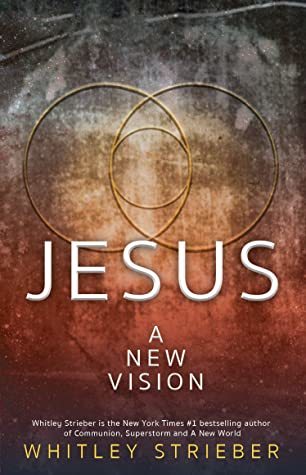
Book Review Jesus: A New Vision by Whitley Strieber
My rating: 5 of 5 stars
Well into the process of researching a work of my own what I am calling “Prototype for Christianity” about a pre-Christian monastic community in Alexandria in Egypt, I was surprised to happen upon the title Jesus, A New Vision, by, of all people, Whitely Strieber, a American writer I had last read decades ago, known then for horror novels and his equally chilling, for me, non-fiction work, Communion, about his alleged encounters with non-human entities whom I will always remember as the little gray guys. This unorthodox mix of interests of his made me just curious enough about what Strieber might have to say about Jesus that I looked up the title on Amazon, where the recent publication date (January 2021), reasonable Kindle price, and ample number of reviews induced me to risk buying a book I would not finish reading.
I was not disappointed. As someone who has spent considerable time on opposite sides of the fence of traditional Christianity and found the grazing in either pasture less than fulfilling, I was amazed, time after time, by the many insights, spiritual and historical, Strieber seeded throughout this book. Not that he provides all the answers or claims that the Gospels do either. Take this quote, for instance: “The Gospel of Thomas reveals the real Jesus in his truth, I think, as a teacher so courageous and so intent on challenging his students that he will deny his own teachings in order to make them think for themselves.”
He presents well-known gems of universal wisdom with startling freshness: “Knowing oneself is accepting oneself, including the parts that we don’t like. If you long to take what another has, for example, you certainly don’t have to do it, but on the Jesus path, you do have to accept that you want to.” Maybe it is just me, but that line made me shrink less from the shadowy parts of my own image in the mirror.
He tosses out some daring conclusions, normally well-founded, that I think will stick to my spiritual ribs: “His [Jesus’s] instruction that, if we understand his way, we will not “taste death” does not mean that the body won’t die, but that its inevitable end will become part of what we accept always and in every moment, not something that we assume is somewhere far off in an indistinct future. I don’t think that he rose from the dead so much as was able to project into the physical world what we all become after death.”
On the other hand, he does make some tantalizing assertions that he then does not follow through with: “He [Jesus] was also helped by a group of people who are almost invisible in the gospels, but not quite. They must have been incredibly learned. In fact, they must have known and understood the secret of death itself, and thus how to surmount it.” Toward the end of the book, he comments further: “Perhaps if we could learn more about that secret band who seems to have been behind his passion and resurrection, and probably his whole life, that would help, but at the present time there appears to be no way to do that.” Pardon the bit of self-promotion, but I am hoping my work, mentioned at the start of this review, will help to identify this “secret band” more precisely.
There is a lot more that is noteworthy in Whitely Strieber’s interpretation of the life of Jesus, but this and other introductory material available should be enough to give the prospective reader a taste for or against (the “true believer” may find much of the book wrongheaded) the viewpoint presented. As for me, I remain amazed that I am writing such a ringing endorsement of a book about Jesus written by Whitely Strieber!
View all my reviews
The post Jesus: A New Vision by Whitley Strieber appeared first on Victor E. Smith.
August 29, 2020
Review: Dorothy Day by Kate Hennessy
In the interest of full disclosure, I mention that I am the son of a couple depicted in this book, who first were followers of Dorothy Day but later part of the group that broke away from her Catholic Worker movement. My parents did then continue to live on a back-to-the-land farm community generally based on CW principles. Thus, as one of a family of ten children, Dorothy Day’s story and work was a background component very much a part of our upbringing.
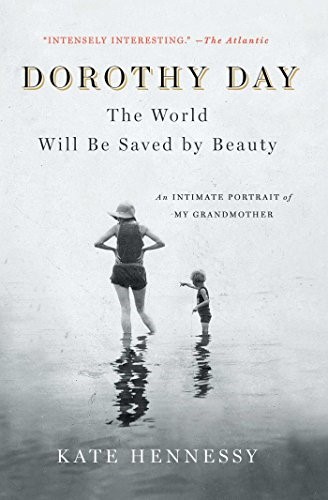
But this review is not about my story, but an appreciation of a personal, honest and artfully written memoir about a complex and heroic American social pioneer, Dorothy Day; her only daughter, the equally complex but more reserved Tamar; and finally her granddaughter, Kate, the author and youngest of nine, who speaks little about herself although her sensitive nature shines through in each intense memory of her grandmother and mother that she chooses to depict.
That Dorothy Day is currently a candidate for sainthood in the Catholic Church—and is as deserving of emulation as any in that category—is an issue Kate eases past in the book, a tact I appreciate as I believe such a title would put the humanity her granddaughter so skillfully depicts on a pedestal beyond the reach of the many, myself included, for whom sainthood might mean little but Dorothy’s example might mean so much.
Although I am about ten years older than Kate with the “divorce” between the Catholic Worker (including Dorothy, Tamar and her children) and the community in which I was raised occurring around the time of my birth (detailed in Chapter 11), I remembered, from a child’s viewpoint, of course, many of the people, places, and ideas in the book. And reading Kate’s detailed descriptions brought back unexpected memories, from its deeply painful aspects to the buried pleasures of growing up in a rugged back-to-the-land manner of living that few modern Americans have experienced. While I would not advocate such a lifestyle wholesale, Kate’s depiction of it reminded me that something akin to it could serve, even in memory, as a spiritual retreat like Henry David Thoreau’s sojourn at Walden Pond. I believe that even those who have never experienced anything like Kate’s or my upbringing will taste a certain nostalgia for the simpler life from her book.
Along with considerable drama and humor: since the author was from a family of nine (as one of ten myself it really resonated), the story of Tamar’s tribe transplanted to a habitat separated from its peers, made Kate’s description of sibling interaction uncommon but endearing. Mix in a multitude of goats, horses, cows, dogs, clunky cars, and really bad-tasting food, and parts of the book are right out of Dickens—only it ain’t fiction, as I can attest.
Dorothy Day and Religion
Religion, obviously, is part of the mix; Dorothy’s organization is called the Catholic Worker. That Dorothy’s way, as well as the one I was raised in, was “more Catholic than the Pope,” as the saying goes, has some truth to it; she did not spare the clergy when a tendency to luxury contradicted the Works of Mercy. Kate includes both sides of the religious conundrum (neither Tamar nor most of her children remained Catholic) but settles gently, as did Dorothy much of the time, on a preference for the perennial principles of true spirituality over a particular creed, the spirit over the letter of religion.
I got to the end of Kate Hennessy’s Dorothy Day with nary a taste of haughty hagiography in my mouth, for which I am grateful. Instead, I found it a good, beautiful, and true presentation of a visionary grandmother and her devoted daughter as told by a talented and affectionate granddaughter, all three of whom were convinced, as the subtitle states, that even if all hell seems to be breaking loose, “the world will be saved by beauty.”
The post Review: Dorothy Day by Kate Hennessy appeared first on Victor E. Smith.
August 11, 2020
Article: Visionary Fiction and the Global Pandemic
My work, The Anathemas: A Novel of Reincarnation and Restitution, rates an “honorable mention” in this excellent article on The Shift Network site, “Visionary Fiction and the Global Pandemic: A Brave New World” by Jodine Turner, the Founder and chairperson of the Visionary Fiction Alliance.
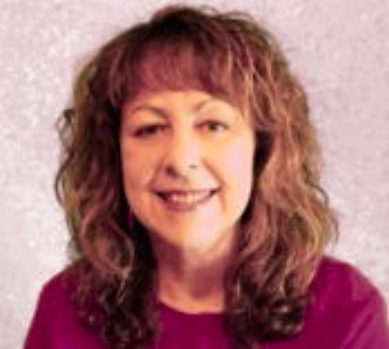 The article explains what Visionary Fiction is, its purpose in expanding consciousness and how it relates to the current pandemic, which has captured the attention, literally, of the entire planet.
The article explains what Visionary Fiction is, its purpose in expanding consciousness and how it relates to the current pandemic, which has captured the attention, literally, of the entire planet.
Here is a taste of Jodine’s thoughts: “During times of crisis, the mists between the current chaos and the imagined world of possibilities are like thin, gauzy veils. When we draw them aside, we get to explore — in our imaginal realms – that normally unseen place where our soul is limitless, and where magic, mystery, and hope thrive. Visionary Fiction parts that veil to glimpse the soul that is inherent all around and within us, those unseen realms that parallel ours and fuel our visions. And from that soul-filled place, we can listen, envision, and act.”
As an active member myself of the Visionary Fiction Alliance for the past seven years, I must acknowledge the creativity and persistence of the founding and managing group of writers, who, along with Jodine Turner, have kept the flame of Visionary Fiction alive and spreading for over a decade now: Margaret Duarte, Eleni Papanou, Saleena Karim, Jim Murdoch and Aaron Yeagle. For more on the team, CLICK HERE.)
The post Article: Visionary Fiction and the Global Pandemic appeared first on Victor E. Smith.
February 24, 2020
The Story Behind The Fringe Candidate & An Excerpt – W Bradford Swift
Prior to 2016, if someone asked me what my political leanings were, I probably would have said, “I’m an inactive independent and other than voting for major elections, I don’t get involved with politics. It’s just not my thing.” Then the 2016 election happened and I was shocked by the results as were many people. And still my own view was, “But what can I do about it? I’m really not interested in politics.”
Yet, I found myself watching more news shows and becoming increasingly curious and upset by what I read and heard. I began to realize how much political decisions can affect our lives and shape our future, not only for me but for my daughter and for my future grandkids.
[image error]So, I continued to watch and listen as authors tend to do, and what I saw and heard did not excite me in the least. I continued to be cynical and resigned by it all…until this past year when a woman I had interviewed in 1997 as a freelance writer threw her name in the hat to become the next President of the United States. What? Really? How can that be? It was true. Marianne Williamson, author and activist became the twenty-second Democratic candidate running for President. Interesting, I thought, and that was about it. No big deal, or at least that was my conclusion at the time. After all, I wasn’t really into politics. Just not my thing. Oh boy, was I ever wrong.
Enter MyMu, my name for the … Continue reading →
The post The Story Behind The Fringe Candidate & An Excerpt – W Bradford Swift appeared first on Visionary Fiction Alliance.
February 10, 2020
Are Fairy Tales Turning Visionary?
Editor’s note: This article (slightly edited here) was originally published at the VFA in November 2014, before the sequels to either Disney’s Maleficent or Frozen were made.
Although visionary fiction often has magical and fantasy elements in common with the fairy tales of old, the two differ in some fundamental respects. The themes of the conventional fairy tale revolve about the triumph of good over evil, where the heroes are princes and princesses, or peasants who marry princes and princesses and gain a kingdom or an endless supply of gold. The villains are always jealous stepparents, or evil older siblings, or tyrannical kings and queens. At other times they are monsters, or trolls, or wolves. The latter in particular are ugly and incomprehensible, external forces, wreaking havoc on the heroes and their people, or they are cunning creatures luring some naive vulnerable character to do their bidding, reminiscent of Satan misleading Adam and Eve.
The characteristics of the heroes are equally clear-cut: the shining knight, or the prince, or the peasant who turns out to be a missing prince. They are almost exclusively male, and their relationship with the heroine is defined as “pure” or “true love”, betraying the psychological influence of mysticism that compares this form of love to Divine union. In some tales this true love is key to breaking some spell that has trapped the damsel, as is the case in the story reviewed here shortly.
Visionary differences
Like the fairy tale, visionary fiction is interested in the good versus evil conflict; and like other modern literature, it asks what “good” and “evil” means in the first place, and what might turn a good person bad. Its protagonists are frequently female, and even if they are not lead characters, they are rarely damsels in distress. Love may feature as a … Continue reading →
The post Are Fairy Tales Turning Visionary? appeared first on Visionary Fiction Alliance.
January 27, 2020
Video Interview – W. Bradford Swift on The Fringe Candidate
In the very first video interview for the VFA, visionary author Brad Swift talks about his upcoming novel The Fringe Candidate.
Special thanks to Cynthia Wisehart, a friend of Brad who conducted this interview for the VFA. She is a life coach and hypnotherapist. For more information please visit her website, Falling Awake Coaching, or her Facebook page.
On a separate note, Brad has just joined our VFA board and will be part of the regular team at our soon-to-be-launched new website. Welcome, Brad!
[image error]About the author
W. Bradford Swift is the author of The Fringe Candidate. He writes both visionary fiction and non-fiction, and has enjoyed a thirty-year long career as a life/business coach and writer/author.
Website: W. Bradford Swift
Book Page: The Fringe Candidate
The post Video Interview – W. Bradford Swift on The Fringe Candidate appeared first on Visionary Fiction Alliance.

